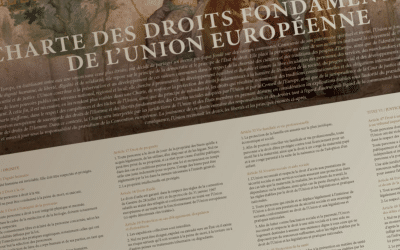On 13th September, during publication of instruction No. 139 by the CCNE on the end of life, according to which “there is a way for ethical application of an active assistance to die”, it is surprising to note the u-turn relative to a previous instruction on the subject dated 2013. What could possibly justify that the ethical principles could evolve over time?
As a matter of fact, on examining the succession of instructions issued on the accompaniment of the end of life, one can note that the CCNE is far from its first about-turn.
The first instruction by the CCNE (National Consultancy Committee on Ethics) on the matter is dated June 1991 (instruction No. 26). At that time, without ambiguity, the CCNE “disapproved that a legal or regulatory text could legalize the act of ending a patient’s life.” According to that instruction, “the legalization of euthanasia, even for exceptional cases, opens the way to abusive and uncontrollable interpretations” the inclusion of euthanasia in doctors’ missions would be a “betrayal of purpose” and would “throw suspicion on the medical teams“.
Nevertheless, on 27th January 2000, the CCNE opened the door to an “exception of euthanasia” in its instruction No. 63, “when facing certain distress, when all therapeutic hope is lost and that suffering has become unbearable.”
But that position, once again, was not final. Thirteen years later, in instruction No. 121, “the majority of the members of the Committee expressed major reservations and recommended not modifying the current law […]. They consider that to retain the prohibition on doctors from “deliberately causing death” protects patients at the end of life, and that it would be dangerous for society if doctors could partake in “causing death.” Meanwhile, euthanasia has been legalized in several states, including Belgium, and the “feedback from foreign experience invites caution.” In France, a law dated 2002 authorized patients to refuse treatment and the Leonetti law in 2005 specifies the refusal of unreasonable therapeutic obstinacy.
This position by the CCNE is unchanged in the 2018 instruction No. 129, until the new about turn, in 2022.
The inconsistency in the CCNE position is so obvious regarding the end of life, it is difficult to understand how such about-turns every ten years can be justified. On the same subject, the CCNE did not show much imagination between 2000 and 2022. In 2022, the instruction mentioned “an increasing trend for the medicalization of the end of life” or the “technicisation”. However such medicalization was already present in the 2000 instruction, leading to the same problems.
Surprisingly also, whether when asking to retain the prohibition from ending life or when legalizing euthanasia, the CCNE claims solidarity. In 2000, they opened the possibility of euthanasia in the name of “human solidarity and compassion“. Whereas, in 2013, they underlined the risks which would result from the legalization of euthanasia ” with respect to the requirement of solidarity and fraternity.” Finally, in 2022, in order to reconcile the two, they concluded that “two expressions of fraternity are […] put under strain”.
After no less than 7 instructions concerning the question of life between 1991 and today, it is therefore difficult to distinguish any ethical consistency in the thinking of the CCNE, whose composition has in fact evolved over time. If there is one thing which has remained constant, it is that the instructions have become ever longer, from 2 pages in 1991 to 63 pages in 2022. It can therefore be concluded that on the end of life, the CCNE often changes its mind…



